Gluten Free Irish Soda Bread is a traditional Irish staple known for its simple ingredients and quick preparation. Originating in the 19th century, it was a practical bread made with soft wheat, baking soda, and buttermilk. Today, gluten free versions offer a delicious alternative for those with celiac disease or gluten sensitivities. This guide explores its history, science, and variations, providing expert techniques and ingredient alternatives. Whether you’re new to gluten free baking or perfecting your recipe, this article helps you create an authentic, flavorful loaf at home.
Table of Contents
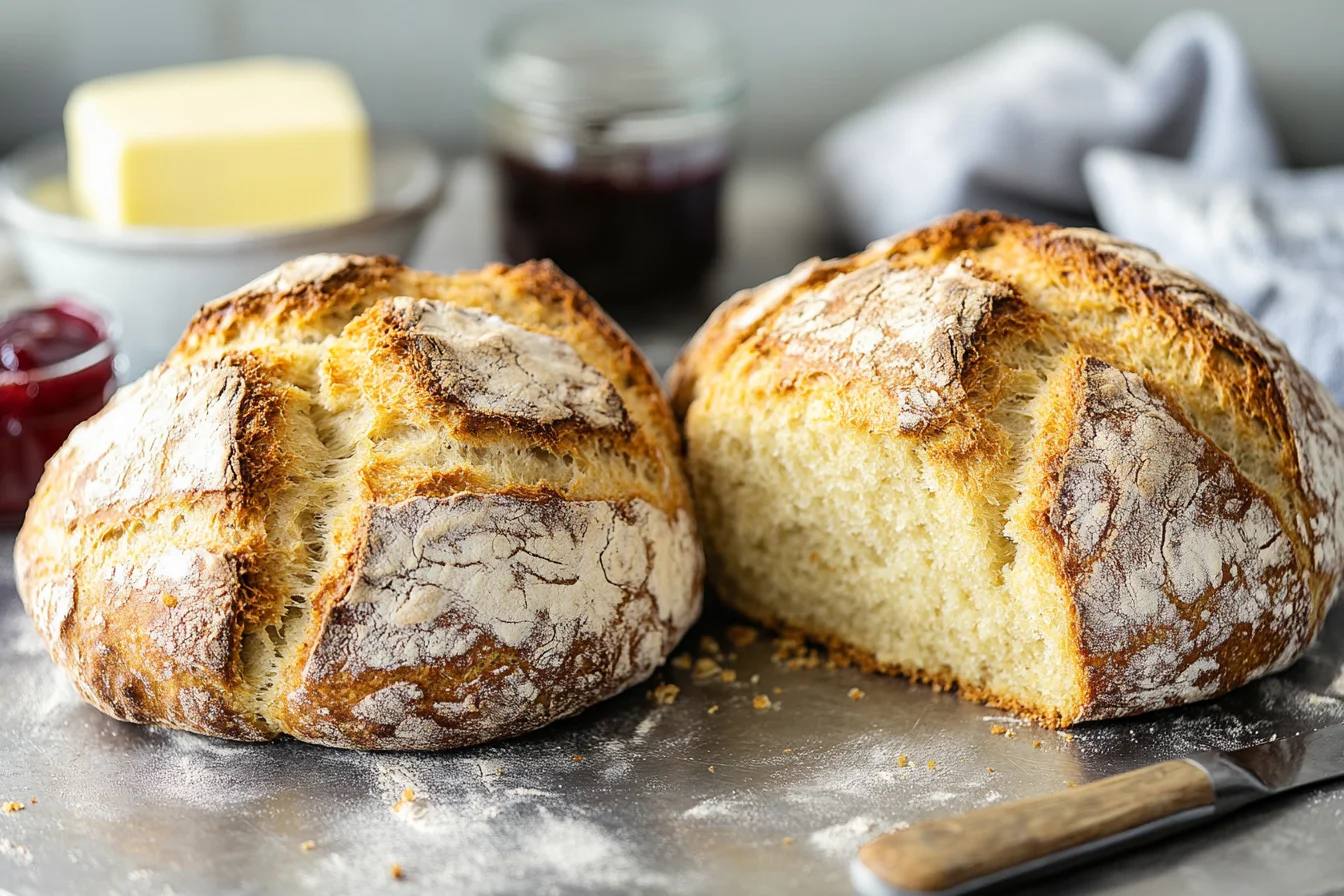
Gluten Free Irish Soda Bread
Ingredients
- 2 cups oat flour
- 1 cup almond flour
- 1 cup tapioca starch
- 1 teaspoon baking soda
- 1 teaspoon salt
- 1 teaspoon xanthan gum optional, for better texture
- 1 ¼ cups buttermilk or dairy free milk + 1 tablespoon vinegar
- 1 egg or flax egg for vegan option
- 2 tablespoons melted butter or coconut oil
- 1 tablespoon honey or maple syrup optional
Instructions
- Preheat the oven to 375°F (190°C) and line a baking sheet with parchment paper.
- Mix dry ingredients – In a large bowl, whisk together oat flour, almond flour, tapioca starch, baking soda, salt, and xanthan gum.
- Combine wet ingredients – In a separate bowl, whisk buttermilk, egg, melted butter, and honey.
- Form the dough – Gradually add the wet ingredients to the dry ingredients, stirring gently until a sticky dough forms.
- Shape the loaf – Lightly flour your hands, shape the dough into a round loaf, and place it on the baking sheet.
- Score the top – Cut a deep cross on the top with a sharp knife to help the bread bake evenly.
- Bake for 35-40 minutes, or until golden brown and a toothpick inserted in the center comes out clean.
- Cool before slicing – Let the bread rest for at least 15 minutes before slicing for the best texture.
Notes
- For extra flavor, add herbs, seeds, or dried fruit to the dough.
- Store at room temperature for 2 days, refrigerate for up to 5 days, or freeze slices for up to 3 months.
- For a dairy free version, use almond or oat milk with vinegar instead of buttermilk.
The Fascinating History of Irish Soda Bread
Origins in Ireland
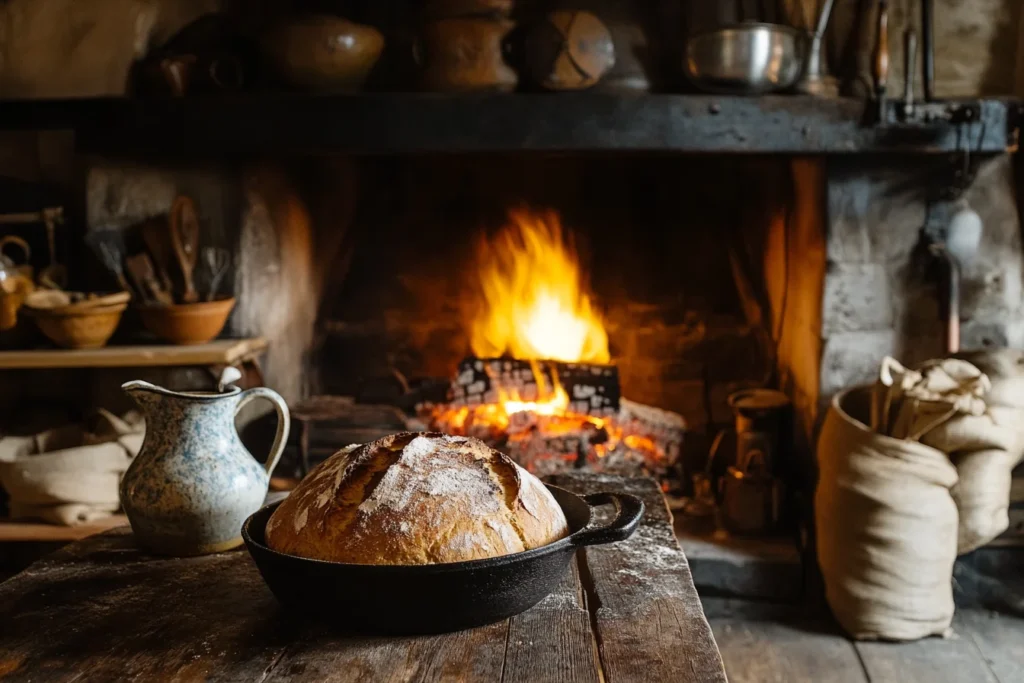
Soda Bread dates back to the early 19th century, when baking soda became widely available in Ireland. Unlike yeast leavened bread, which required time and skill to ferment, soda bread used a simple chemical reaction between baking soda (sodium bicarbonate) and acidic buttermilk to create a quick rise. This made it an accessible and practical option for rural families who relied on basic pantry staples.
Ireland’s climate was not well suited for growing the hard wheat needed for yeast based bread, but soft wheat, which was ideal for soda bread, thrived. The bread was traditionally cooked on a griddle or in a bastible pot (a type of Dutch oven), making it perfect for homes without conventional ovens.
The Significance of the Cross on Top
One of the most recognizable features of traditional Irish soda bread is the deep cross scored on top before baking. This practice was not just decorative, it served several important purposes:
- Even Baking – The cross allowed heat to penetrate the center, ensuring the bread baked evenly.
- Preventing Large Cracks – Scoring the dough controlled the expansion, preventing random cracks from forming.
- Superstitions and Folklore – Many Irish households believed the cross warded off evil spirits or blessed the bread, ensuring it brought good fortune to the family.
While the traditional cross remains part of the bread’s identity, modern gluten free versions require slight adaptations to achieve the same effect due to differences in dough texture.
How Gluten Free Baking Revives Traditions
For those with gluten intolerance or celiac disease, enjoying authentic Irish soda bread has been a challenge. However, with advancements in gluten free flour blends and baking techniques, it is now possible to replicate the texture and flavor of traditional soda bread. Bakers have experimented with alternative flours like oat, almond, and rice flour, creating variations that stay true to the essence of the original bread while catering to dietary needs.
The Science of Gluten Free Baking – What Makes It Work?
Understanding the Role of Gluten in Bread
Gluten is a protein found in wheat, barley, and rye that gives traditional bread its elasticity and chewiness. When mixed with water, gluten forms a network that traps air, allowing bread to rise and develop structure. Without gluten, bread can become crumbly, dense, or dry, making it challenging to create a soft, yet sturdy texture in gluten free versions.
Since gluten free flour lacks this natural elasticity, alternative ingredients like binding agents (xanthan gum, psyllium husk) and protein rich flours (almond, oat, or chickpea flour) help compensate for its absence. These elements improve the texture, moisture retention, and overall structure of gluten free Irish soda bread.
The Role of Baking Soda and Acid in Soda Bread
Irish soda bread does not rely on yeast to rise. Instead, it uses a chemical reaction between baking soda (a base) and an acid (traditionally buttermilk or vinegar) to create carbon dioxide gas, which forms air pockets in the dough. This process gives soda bread its distinct light and airy texture despite the absence of yeast.
In gluten free baking, achieving the right rise is even more critical since the dough lacks the strength of gluten to trap air effectively. To ensure success, bakers often:
- Use fresh baking soda – Old baking soda loses its effectiveness, resulting in a dense loaf.
- Increase acidity if needed – Apple cider vinegar or lemon juice can enhance the reaction if a recipe lacks buttermilk.
- Minimize handling – Overmixing releases trapped air, leading to a tougher texture.
How to Replace Gluten for the Perfect Texture
To replicate the soft, slightly dense crumb of traditional Irish soda bread, a combination of gluten free flours and stabilizers is essential. Some of the best replacements include:
- Oat Flour – Provides a mild, nutty flavor and a similar texture to wheat flour.
- Almond Flour – Adds moisture and richness, preventing dryness.
- Rice Flour – A neutral, versatile base that lightens the loaf.
- Tapioca or Potato Starch – Helps create a soft, chewy bite.
- Xanthan Gum or Psyllium Husk – Binds ingredients together, mimicking gluten’s elasticity.
By understanding the science behind these ingredients, bakers can craft a gluten free Irish soda bread that is light, tender, and flavorful, without compromising authenticity.
Choosing the Best Ingredients for Gluten Free Irish Soda Bread
Best Gluten Free Flour Blends
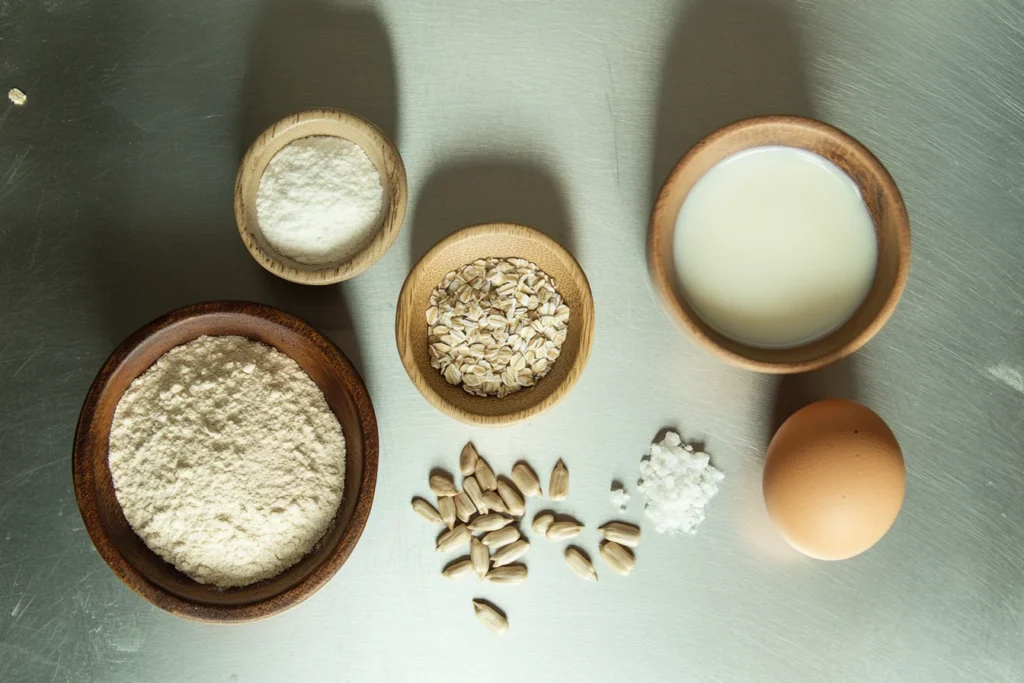
Choosing the right gluten free flour blend is essential to achieving the perfect texture in Irish soda bread. Since no single gluten free flour can fully replace wheat flour, a combination of different flours creates the right balance of density, moisture, and flavor. Some of the best options include:
- Oat Flour – A mild, slightly sweet flour that provides structure and a traditional taste.
- Almond Flour – Adds richness and helps retain moisture, preventing a dry loaf.
- Brown Rice Flour – A versatile, neutral tasting base that lightens the bread.
- Tapioca or Potato Starch – Enhances chewiness and gives a better rise.
- Sorghum or Millet Flour – Provides a hearty, whole grain feel similar to traditional soda bread.
A well balanced flour mix typically includes one protein rich flour (oat or almond), one starchy flour (tapioca or potato), and a neutral base (rice flour).
Dairy Free and Vegan Alternatives
Traditional Irish soda bread relies on buttermilk for its tangy flavor and essential acidity to react with baking soda. However, for those who are dairy free or vegan, several effective substitutions can be used:
- Dairy Free Buttermilk – Mix 1 cup of plant based milk (almond, oat, or soy) with 1 tablespoon of apple cider vinegar or lemon juice. Let it sit for 5-10 minutes before using.
- Coconut Yogurt – A creamy alternative that adds moisture and a mild tang.
- Aquafaba or Flax Egg – Used to help bind ingredients for a sturdier structure.
For a completely vegan gluten free soda bread, opt for a dairy free buttermilk substitute and a small amount of olive oil or applesauce to maintain moisture.
Sweet vs. Savory Variations
While traditional Irish soda bread is typically plain or lightly sweetened, modern variations introduce new flavors and ingredients. Some popular twists include:
- Sweet Variations
- Cranberry and Orange Zest – A bright, fruity take on the classic loaf.
- Raisins and Honey – A naturally sweetened version reminiscent of traditional Spotted Dog soda bread.
- Cinnamon and Maple Syrup – Adds warmth and richness to the flavor.
- Savory Variations
- Herb and Cheese – A blend of rosemary, thyme, and grated cheddar for a more robust taste.
- Garlic and Onion – A hearty, flavorful option that pairs well with soups and stews.
- Seeded Soda Bread – Sunflower, sesame, and pumpkin seeds add crunch and nutritional benefits.
Experimenting with these ingredients allows bakers to create personalized versions of gluten free Irish soda bread while maintaining its authentic charm.
Expert Techniques for the Best Gluten Free Irish Soda Bread
Mixing Methods for Perfect Dough
Gluten free dough behaves differently from traditional wheat dough, requiring gentle handling to achieve the right texture. Here are key techniques to ensure success:
- Do Not Overmix – Unlike wheat based dough, gluten free mixtures do not develop elasticity. Overmixing can lead to a dense, gummy loaf rather than a light and tender one.
- Use Cold Ingredients – Keeping dairy free buttermilk and butter cold helps create a flaky texture, similar to biscuits.
- Let the Dough Rest – Allowing the dough to sit for 10–15 minutes before baking helps hydrate the flours and improves texture.
- Keep the Dough Sticky – Gluten free dough should be slightly wetter than traditional soda bread dough, as alternative flours absorb moisture differently.
Baking Temperature and Time Adjustments
Gluten free breads require different baking conditions than their wheat based counterparts. To achieve the perfect rise and texture, consider the following:
- Preheat the Oven Properly – A hot oven (around 375–400°F or 190–200°C) helps the bread rise quickly before the crust sets.
- Use a Dutch Oven or Cast Iron Skillet – These hold heat well and mimic traditional Irish bastible pots, creating a better crust.
- Check for Doneness – Gluten free bread can appear done on the outside but remain undercooked inside. Test for doneness by tapping the bottom, if it sounds hollow, it’s ready.
Troubleshooting Common Problems
Even experienced bakers encounter issues when making gluten free soda bread. Here’s how to fix the most common ones:
- Bread is Too Crumbly – Add an extra binding agent like psyllium husk or xanthan gum, and make sure to use enough moisture.
- Loaf is Too Dense – Increase the baking soda slightly and ensure proper acidity by adding apple cider vinegar or lemon juice.
- Undercooked Center – Bake at a lower temperature for longer, covering the bread with foil halfway through baking to prevent over browning.
- Lack of Rise – Ensure fresh baking soda is used and that ingredients are at room temperature before mixing.
By mastering these expert techniques, bakers can achieve a golden, rustic, and perfectly textured gluten free Irish soda bread every time.
Unique and Modern Variations of Gluten Free Irish Soda Bread
High Protein Soda Bread
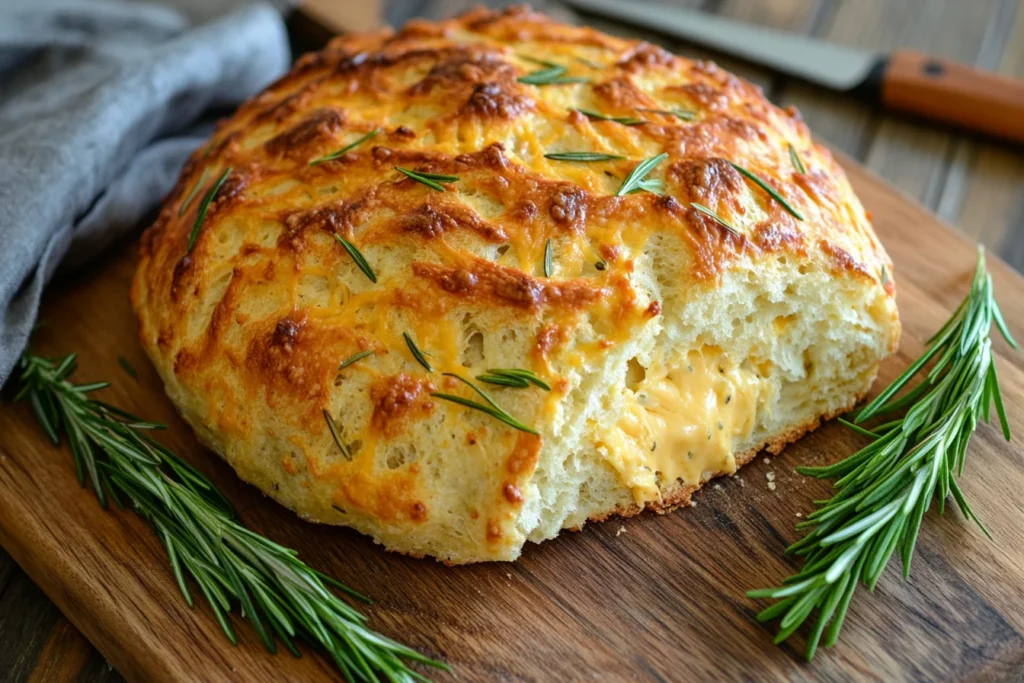
For those looking to increase the nutritional value of their gluten free soda bread, incorporating high protein ingredients can add both flavor and health benefits. Some excellent additions include:
- Chia or Flax Seeds – Rich in fiber and omega 3s, these seeds add a slight crunch and improve texture.
- Hemp or Sunflower Seeds – Provide extra protein and a nutty taste without overpowering the bread.
- Greek Yogurt or Plant Based Protein Powder – Enhances moisture while boosting protein content.
A high protein version of gluten free soda bread is great for athletes, fitness enthusiasts, or anyone looking for a more filling loaf.
Paleo and Keto Friendly Versions
For those following low carb diets, traditional gluten free flours like oat or rice flour may not be suitable. Instead, paleo and keto variations use:
- Almond Flour – A naturally low carb flour that creates a moist, slightly dense texture.
- Coconut Flour – Absorbs moisture well and works best when combined with eggs for structure.
- Psyllium Husk Powder – Adds fiber and mimics the elasticity of gluten.
Since these flours absorb moisture differently, keto and paleo soda bread recipes often require extra eggs or fats like coconut oil or butter to maintain the right consistency.
Infused Flavors from Around the World
While traditional Irish soda bread has a simple, rustic taste, modern bakers have experimented with international flavors to create exciting variations:
- Mediterranean Inspired Soda Bread – Infused with rosemary, sundried tomatoes, and feta cheese for a savory twist.
- Indian Spiced Version – Flavored with cumin, turmeric, and garlic for a warm, aromatic loaf.
- Chocolate and Hazelnut Bread – A sweeter option incorporating dark chocolate chunks and crushed hazelnuts.
These variations offer a fresh take on gluten free Irish soda bread, allowing bakers to explore different cultural influences while maintaining the bread’s essence.
How to Serve and Enjoy Gluten Free Irish Soda Bread
Best Ways to Eat It
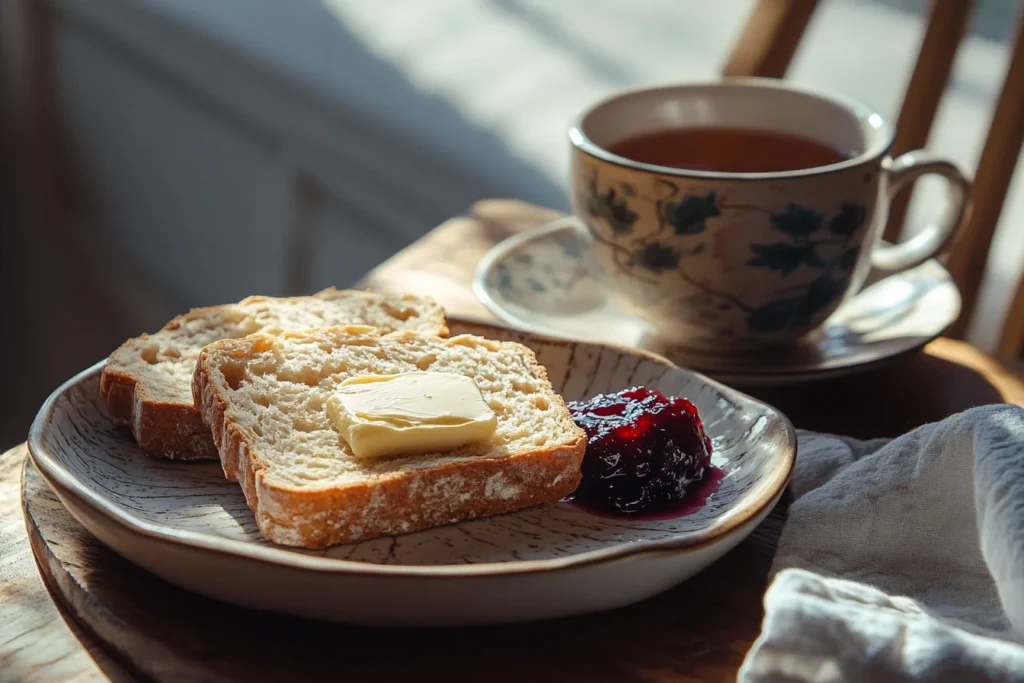
Gluten free Irish soda bread is incredibly versatile and pairs well with both sweet and savory accompaniments. Some of the best ways to enjoy it include:
- With Butter and Jam – A classic pairing that highlights the bread’s rustic flavor.
- Alongside Soups and Stews – The dense, hearty texture makes it ideal for dipping into rich broths.
- With Cheese and Honey – A perfect balance of salty and sweet flavors.
- Toasted with Avocado – A modern twist for a nutrient packed breakfast or snack.
Whether served warm or at room temperature, this bread is a comforting and satisfying addition to any meal.
How to Store for Freshness
Since gluten free bread tends to dry out faster than wheat based bread, proper storage is key:
- Room Temperature: Keep in an airtight container at room temperature for up to 2 days.
- Refrigeration: Keep wrapped in a damp paper towel inside an airtight bag to maintain moisture for up to 5 days.
- Freezing: Slice the bread and freeze it in a sealed freezer bag for up to 3 months. Simply toast or warm before serving.
Reheating and Reviving Leftovers
To bring back the freshness of day old gluten free soda bread:
- Oven Method: Wrap in foil and warm at 300°F (150°C) for 10–15 minutes.
- Toaster Method: Toast slices on a low setting to avoid over drying.
- Microwave Method: Wrap in a damp paper towel and heat in 10-second intervals to prevent dryness.
With the right storage and reheating techniques, gluten free Irish soda bread can stay fresh and delicious for days.
Frequently Asked Questions (FAQs)
1. Why is my gluten free soda bread crumbly?
Gluten free bread can be crumbly due to a lack of binding agents. Add xanthan gum, psyllium husk, or eggs to improve texture.
2. Can I make gluten free Irish soda bread without buttermilk?
Yes. Substitute buttermilk with plant based milk + apple cider vinegar for a dairy free version.
3. What is the best gluten free flour for Irish soda bread?
A blend of oat flour, almond flour, and rice flour provides the best texture and flavor.
4. How do I get a crispy crust on gluten free soda bread?
Bake at a higher initial temperature (400°F or 200°C) for the first 10 minutes, then reduce to 375°F (190°C) for the remainder.
5. Can I add yeast to gluten free soda bread?
Traditional soda bread is yeast free, but adding a small amount of yeast can enhance flavor and structure.
6. How do I make gluten free soda bread more flavorful?
Incorporate herbs, seeds, dried fruit, or cheese for added depth and variety.
If you’re a fan of Gluten Free Irish Soda Bread, you might also enjoy other traditional baked goods with a twist. Check out this classic soda bread recipe to compare different variations and find your favorite. Want to pair your bread with something sweet? Try these banana oatmeal muffins for a delicious and healthy breakfast option.
For those looking for a heartier meal, consider serving your soda bread alongside a warm and comforting asparagus soup, a perfect combination for a cozy day. Happy baking. 🍞😊
Conclusion
Gluten free Irish soda bread is more than just a dietary alternative, it is a modern twist on a historic staple, allowing people of all dietary needs to enjoy its rich heritage and comforting flavors. By understanding the science of gluten free baking, using the right flour blends, and experimenting with creative variations, bakers can create a loaf that is both delicious and authentic.
Whether served with traditional Irish meals, alongside a hearty stew, or simply toasted with butter, this bread remains a timeless and adaptable favorite. With the right techniques and ingredients, anyone can bring a piece of Ireland into their kitchen, gluten free and full of flavor.